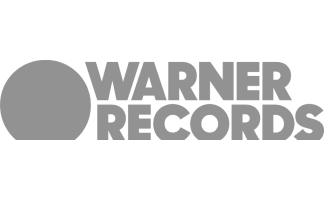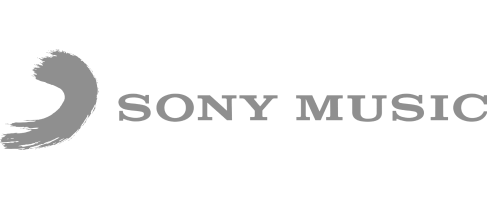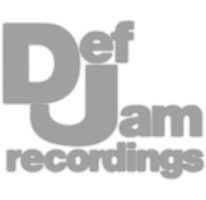Sage Audio presents tips on how to mix an acoustic guitar. You will almost always want to add a high-pass filter to your track and obviously EQ settings will vary depending on your acoustic tracks. Usually you will only want a very small amount of compression. Effects can vary but if you are looking for a natural acoustic sound it is best to have as little as possible and sometimes none at all.
Digital music distribution service TuneCore paid its artists $102 million in 2012. TuneCore also had 79 million downloads and distributed 112,158 total releases in 2012. TuneCore differs from other digital platforms like iTunes, Amazon, and Spotify by relying on a yearly subscriptions. Since 2006 they have distributed 447,000 albums and singles, and has paid artists over $250 million.
Sage Audio takes a look at the record contract known as a 360 deal. A 360 deal entitles the label to more of the artist’s income from sources other than record sales. Also the label typically agrees to invest more money in all aspects of the artist’s career including touring, merchandise, etc. Depending on the artist will depend on whether a 360 contract will work or not. It is best to have a lawyer present in any contracts to be signed to make sure the agreement is as fairs as possible.
Sage Audio looks at the different types of record deals in today’s music industry. An Exclusive Record Contract puts the artist under the management of a label. An Independent Label Contract may let the artist retain the right to their music but it may only cover the recording and not promotion or vice versa. There are many different ways that an Independent Label Contract can be worked out among the artist and the label. A 360 Record Contract puts the label in more control of all aspects of an artist’s career, including publishing, touring, and merchandise. In exchange for the label providing more support, all revenue is split.
An introduction to MIDI and its use in modern recording studios. MIDI stands for Musical Instrument Digital Interface. A MIDI signal contains four main pieces of information that controls how a device functions. In studios MIDI’s are often keyboards or drum machines.
Sage Audio explores what Facebook’s new music tab and redesigned news feed mean for musicians. Facebook’s new music tab is located in the categories section along with games and photos. On the upside Facebook is trying to start giving more emphasis on music but it does have a downside unfortunately. With Facebook the user is in more control of what they see in the news feed and can block what they don’t want to see or more specifically block certain people, bands, and artists from what they see or even post. This way it does make it harder for independent artists to reach out to new fans on Facebook but it does allow them to still have a following of current fans. Through current fans liking the bands page it will help spread the word or even if current fans post about them it will help spread the word but Facebook still has a long way to go to become musician friendly.
As the next step in a fight over songwriter royalty rates that goes back years, Pandora has sued ASCAP for lower fees. Pandora’s needs are somewhat vague and they are seeking “reasonable fees and terms.” ASCAP and Pandora originally had terms set in 2005 but Pandora has been paying interim fees since January 2011 because they have been unable to come to an agreement. Songwriters are already not too happy with Pandora because they are already paying far less than any other group. Here are some facts to consider in regards to this lawsuit. Pandora had a revenue of $338 million in 2011 as well as a market capitalization that was almost $1.6 billion that same year.
Sage Audio takes a look at the merits of getting it right at the source in home recording studios. “Get it right at the source” refers to taking the time needed to get a proper recording sound and performance rather than relying on the “fix it in the mix” mindset. Always get the best recording you can but don’t get so caught up to achieve the perfect source track that you never actually finish recording any tracks. “Fix it in the mix” refers to adjusting the EQ during mixing but it’s not necessarily the most beneficial route to take in the long run.
A look at how the music industry must embrace digital music to remain relevant and profitable. To start off with the bad news is that in 2012 it was the 12th year of flat or declining music sales and during those 12 years it has been nearly cut in half. During this decline though recently singles sales have been escalating thanks to digital music stores like iTunes and Amazon.com. In 2012 1.4 billion singles were purchased. The current retail value of the music industry is $23 billion. Silverman gave us some statistics to get excited about and a couple of them are that music synchronization license revenue continues to rise. The other one is that music performance revenue nearly hit half a billion dollars in 2012 at SoundExchange with projections of a billion dollars of revenue in four years.
Sage Audio discusses how to use reverb to help get great mixes in your home recording studio. Reverb is designed specifically to recreate a natural playing environment that way it can improve the balance of your mixes. Reverb is commonly used as an effect on a track. Reverb makes the space for vocals and instruments sound more natural and it does the same for those instruments in your mix.
This article compares the prices and features of various home recording software. Those included are Pro Tools, Logic Pro, Cakewalk SONAR X2 Studio, Ableton Live, and Reason. Logic Pro is one of the only ones that is made by Apple without a version available for Windows. Ableton offers very intuitive loop functions and works very well with MIDI as well as virtual instruments. Reason is primarily for DJs because it’s an all-in-one package that offers all you need for virtual instruments, mixing, and remixing.
Sage Audio kicks off its 'How to Get a Record Deal Series' with an overview of today’s recording deals. Many artists make good livings doing everything themselves but it’s not to say that it couldn't always get better. Digital music and digital distribution is extremely important in today’s society. Because of iTunes and other internet radio services bringing in revenue for artists there are still other artists who want a venue to display physical copies. It is always good to have a record company foot the bill for an artist’s studio time that may bring them to the next level in their career.
Sage Audio looks at how rock doc “Sound City” explores the state of today’s music industry. The Neve Console helps us point out a difference from how it was back then and how it is now. A custom board cost more than $75,000 when it was new and the house he had to purchase at the time cost less than $40,000. Now-a-day independent artists can make an entire album for a little more than the price of recording software and the cost of a laptop which is far less than the numbers mentioned above. There are still studios offering analog recording but digital is certainly the way most artists go. This could be because of artistic choice or merely because it is much less expensive.
The production sound mixer of ‘Les Miserables’ discusses recording vocals performed live in the film. What helped give the actors the ability to make it sound like a live and natural performance is because they would sing to a feed in their ear of a live piano player working off screen. Abbey Road Studio then took the tracks and overdubbed them by an orchestra at the studio. In order to get the vocal sound good enough for the final product in a live shot the production sound mixer, Simon Hayes, employed 50 lavalier microphones that the actors wore when singing.
Neil Young's high resolution digital music subscription Pono promises better than CD audio quality. Rumors say the service is being tested in dance clubs. Pono is digital audio in an uncompressed high definition audio format with the same quality and is typically recorded in a sample rate of 192 kHz and a depth of 24-bit. While they are going to be expensive to produce, most of today’s smart phones, MP3 players and computers aren't going to be able to play these files at full quality.









